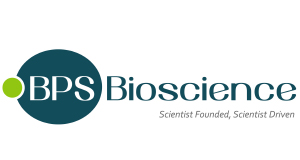TSLP Responsive Luciferase Reporter Ba/F3 Cell Line
TSLP Responsive Luciferase Reporter Ba/F3 Cell Line
Artikelnummer
BPS82500
Verpackungseinheit
2 vials
Hersteller
BPS Bioscience
Verfügbarkeit:
wird geladen...
Preis wird geladen...
Products from BPS Bioscience require a minimum order value above 400€
Application: Screen and characterize modulators of TSLP activity.
Background: TSLP (thymic stromal lymphopoietin) is a protein that functions as a type I cytokine, as an alarmin and growth factor in the immune system. It is involved in type 2 immune responses, TH2 (T helper 2 cells) responses, and the maturation and recruitment of dendritic cells (DCs), T cells, B cells, neutrophils, mast cells, and other lymphoid cells. It can be produced by epithelial and stromal cells in lung, skin, and gastric system, but also by DCs, basophils and mast cells. Its expression can be induced by infections, pro-inflammatory cytokines, proteases, and even mechanical injury. For instance, it can be produced in the lungs in response to infection with influenza or rhinovirus. Its role as alarmin can result in increasing inflammation. TSLP is linked to allergic reactions such as asthma, atopic dermatitis, and food allergies, by inducing the expression of OX40L, CD80 and CD86 and stimulating CD4+ T cells. TSLP signals through a heterodimeric receptor of TSLP-R (CRLF2) and IL7Ra (CD127), and via downstream activation of JAK2/STAT5 signaling. In 2021, the TLSP-neutralizing antibody tezepelumab was approved for the treatment of severe asthma. Targeting TSLP is an active area of investigation with ongoing clinical trials for the treatment of autoimmune disorders.
Description: The TSLP Responsive Luciferase Reporter Ba/F3 Cell Line is a murine Ba/F3 cell line engineered to express both TSLP-R (thymic stromal lymphopoietin receptor, also known as CRLF2, cytokine receptor like factor 2) (NM_022148.4) and IL-7Ra (Interleukin 7 receptor alpha) (NM_002185.5) separated by a self-cleaving P2A peptide. The construct was delivered bytransduction of STAT5 Luciferase Reporter Ba/F3 cells (#79772), which express a firefly luciferase reporter driven by STAT5 response elements located upstream of the minimal TATA promoter. After activation by TSLP, the endogenous transcription factor STAT5 binds to the response elements, inducing transcription of the luciferase reporter gene.This cell line has been validated to respond to TSLP. Additional functional validation demonstrates that TSLP-induced luciferase activity can be inhibited by either anti-TSLP or anti-TSLPR neutralizing antibodies.TSLP binds to TSLPR, recruits the IL-7Ra co-receptor and activates downstream JAK1/2 (janus kinase 1/2) tyrosine kinases, which phosphorylate the transcription factor STAT5. STAT5 phosphorylation triggers the formation of a homodimer and translocation to the nucleus, where it can activate the transcription of the Firefly luciferase reporter driven by STAT5 response elements present in the promoter.
Host Cell Line: Ba/F3
Mycoplasma Testing: The cell line has been screened to confirm the absence of Mycoplasma species.
Storage Stability: Cells are shipped in dry ice and should immediately be thawed or stored in liquid nitrogen upon receipt. Do not use a -80°C freezer for long term storage. Contact technical support at support@bpsbioscience.com if the cells are not frozen in dry ice upon arrival.
Supplied As: Each vial contains >1 x 106 cells in 1 ml of Cell Freezing Medium (BPS Bioscience #79796)
Uniprot: Q969D9
Warnings: Avoid freeze/thaw cycles
Biosafety Level: BSL-1
References: Ebina-Shibuya R. and Leonard WJ. 2023 Nat Rev Immunol, 23: 24 - 37
Marković I. and Savvides S., 2020 Front. Immunol., 11.
Palacios R. et al., 1984 Nature 309 (5964): 126-131.
Rochman Y., Spolski R. and Leonard, W., 2009 Nat Rev Immunol, 9: 480 - 490.
Verstraete K. et al., 2014 Nat Struct Mol Biol, 21: 375 - 382.
Application: Screen and characterize modulators of TSLP activity.
Background: TSLP (thymic stromal lymphopoietin) is a protein that functions as a type I cytokine, as an alarmin and growth factor in the immune system. It is involved in type 2 immune responses, TH2 (T helper 2 cells) responses, and the maturation and recruitment of dendritic cells (DCs), T cells, B cells, neutrophils, mast cells, and other lymphoid cells. It can be produced by epithelial and stromal cells in lung, skin, and gastric system, but also by DCs, basophils and mast cells. Its expression can be induced by infections, pro-inflammatory cytokines, proteases, and even mechanical injury. For instance, it can be produced in the lungs in response to infection with influenza or rhinovirus. Its role as alarmin can result in increasing inflammation. TSLP is linked to allergic reactions such as asthma, atopic dermatitis, and food allergies, by inducing the expression of OX40L, CD80 and CD86 and stimulating CD4+ T cells. TSLP signals through a heterodimeric receptor of TSLP-R (CRLF2) and IL7Ra (CD127), and via downstream activation of JAK2/STAT5 signaling. In 2021, the TLSP-neutralizing antibody tezepelumab was approved for the treatment of severe asthma. Targeting TSLP is an active area of investigation with ongoing clinical trials for the treatment of autoimmune disorders.
Description: The TSLP Responsive Luciferase Reporter Ba/F3 Cell Line is a murine Ba/F3 cell line engineered to express both TSLP-R (thymic stromal lymphopoietin receptor, also known as CRLF2, cytokine receptor like factor 2) (NM_022148.4) and IL-7Ra (Interleukin 7 receptor alpha) (NM_002185.5) separated by a self-cleaving P2A peptide. The construct was delivered bytransduction of STAT5 Luciferase Reporter Ba/F3 cells (#79772), which express a firefly luciferase reporter driven by STAT5 response elements located upstream of the minimal TATA promoter. After activation by TSLP, the endogenous transcription factor STAT5 binds to the response elements, inducing transcription of the luciferase reporter gene.This cell line has been validated to respond to TSLP. Additional functional validation demonstrates that TSLP-induced luciferase activity can be inhibited by either anti-TSLP or anti-TSLPR neutralizing antibodies.TSLP binds to TSLPR, recruits the IL-7Ra co-receptor and activates downstream JAK1/2 (janus kinase 1/2) tyrosine kinases, which phosphorylate the transcription factor STAT5. STAT5 phosphorylation triggers the formation of a homodimer and translocation to the nucleus, where it can activate the transcription of the Firefly luciferase reporter driven by STAT5 response elements present in the promoter.
Host Cell Line: Ba/F3
Mycoplasma Testing: The cell line has been screened to confirm the absence of Mycoplasma species.
Storage Stability: Cells are shipped in dry ice and should immediately be thawed or stored in liquid nitrogen upon receipt. Do not use a -80°C freezer for long term storage. Contact technical support at support@bpsbioscience.com if the cells are not frozen in dry ice upon arrival.
Supplied As: Each vial contains >1 x 106 cells in 1 ml of Cell Freezing Medium (BPS Bioscience #79796)
Uniprot: Q969D9
Warnings: Avoid freeze/thaw cycles
Biosafety Level: BSL-1
References: Ebina-Shibuya R. and Leonard WJ. 2023 Nat Rev Immunol, 23: 24 - 37
Marković I. and Savvides S., 2020 Front. Immunol., 11.
Palacios R. et al., 1984 Nature 309 (5964): 126-131.
Rochman Y., Spolski R. and Leonard, W., 2009 Nat Rev Immunol, 9: 480 - 490.
Verstraete K. et al., 2014 Nat Struct Mol Biol, 21: 375 - 382.
| Artikelnummer | BPS82500 |
|---|---|
| Hersteller | BPS Bioscience |
| Hersteller Artikelnummer | 82500 |
| Verpackungseinheit | 2 vials |
| Mengeneinheit | PAK |
| Wirt | Mouse |
| Produktinformation (PDF) | Download |
| MSDS (PDF) |
|

 English
English






